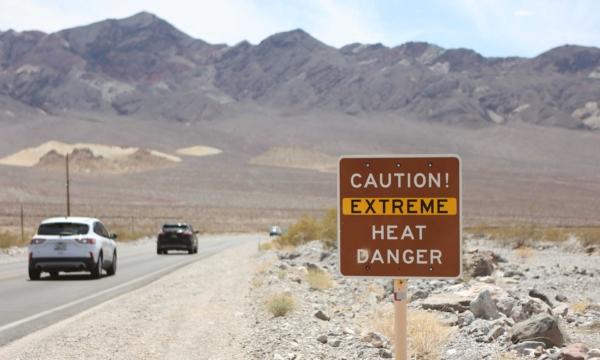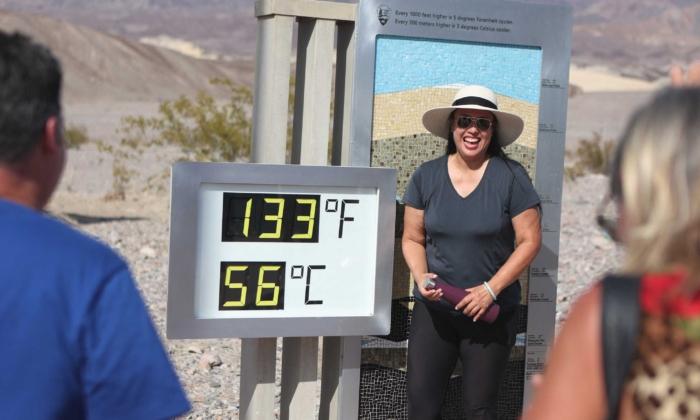The National Weather Service (NWS) is warning about more scorching heat across the United States in the coming days—with about 80 million Americans set to experience 100-degree-plus temperatures this weekend.
The agency is expecting “oppressive heat indices” across the South Central and Southeast United States through at least the early weekend.
“Approximately 80 million people should experience an air temperature or heat index above 105 degrees through this weekend, with dozens of daily record high afternoon and overnight temperatures possible,” it stated.
Between July 19 and July 25, Phoenix; Albuquerque, New Mexico; Salt Lake City; Reno, Nevada; and Midland Texas, regions are expected to see the highest maximum air temperatures exceed 100 degrees Fahrenheit, with Denver and Los Angeles following closely with temperatures in the 90s.
The NWS is predicting “threatening heat” to continue in the Southwest region at least until July 28. In the middle of the coming week, excessive heat is seen to likely expand into the Midwest, with several locations hitting their highest temperatures of the year.

The agency warned people to “take the heat seriously and avoid extended time outdoors.” Temperatures and heat indices will be at levels that could potentially be deadly to people who don’t have adequate hydration or effective cooling, it stated.
Even during night times, temperatures are expected to give “very little relief,” NWS stated while pointing out that heat is the “leading weather-related killer in the U.S.”
Scorching Heat in US
The intense heat wave in the Southwest is being blamed on a heat dome, which is created when a ridge of high pressure builds in a region, and the atmosphere traps hot air like a lid or cap. With air unable to escape the dome, temperatures keep warming, sometimes to dangerous levels.According to the national integrated heat health information system Heat.gov, close to 120 million people were under NWS’s heat alerts as of July 20. For July 20, an “excessive heat warning” was in effect in places such as Las Vegas, Los Angeles, Phoenix, Tucson, Dallas, and San Antonio.
In Arizona, multiple counties, such as Maricopa, Pima, Gila, Yuma, Mohave, and La Paz, have heat warnings stretching into the night of July 22.
High Temperatures Worldwide
The extreme heat isn’t a phenomenon limited to the United States. Other parts of the world are also facing high temperatures.In Europe, Rome has seen record-high temperatures of 107.2 degrees F, with the heat wave being cited as the main reason for a 20 percent surge in the number of people visiting emergency rooms at hospitals. In France, nine areas in the southern regions have seen record-high temperatures.

Wildfires are raging nearby Greek capital Athens, contributing to the sweltering heat in the region.
In the Middle East, the Iraqi capital of Baghdad recorded a high of 122 degrees F this week. In China, the town of Sanbao registered a national record of 126 degrees F.
“The exceptional warmth in June and at the start of July occurred at the onset of the development of El Nino, which is expected to further fuel the heat both on land and in the oceans and lead to more extreme temperatures and marine heatwaves,” said professor Christopher Hewitt, WMO director of climate services.
El Nino is a climate pattern linked to the unusual warming of surface waters in the eastern Pacific Ocean.





